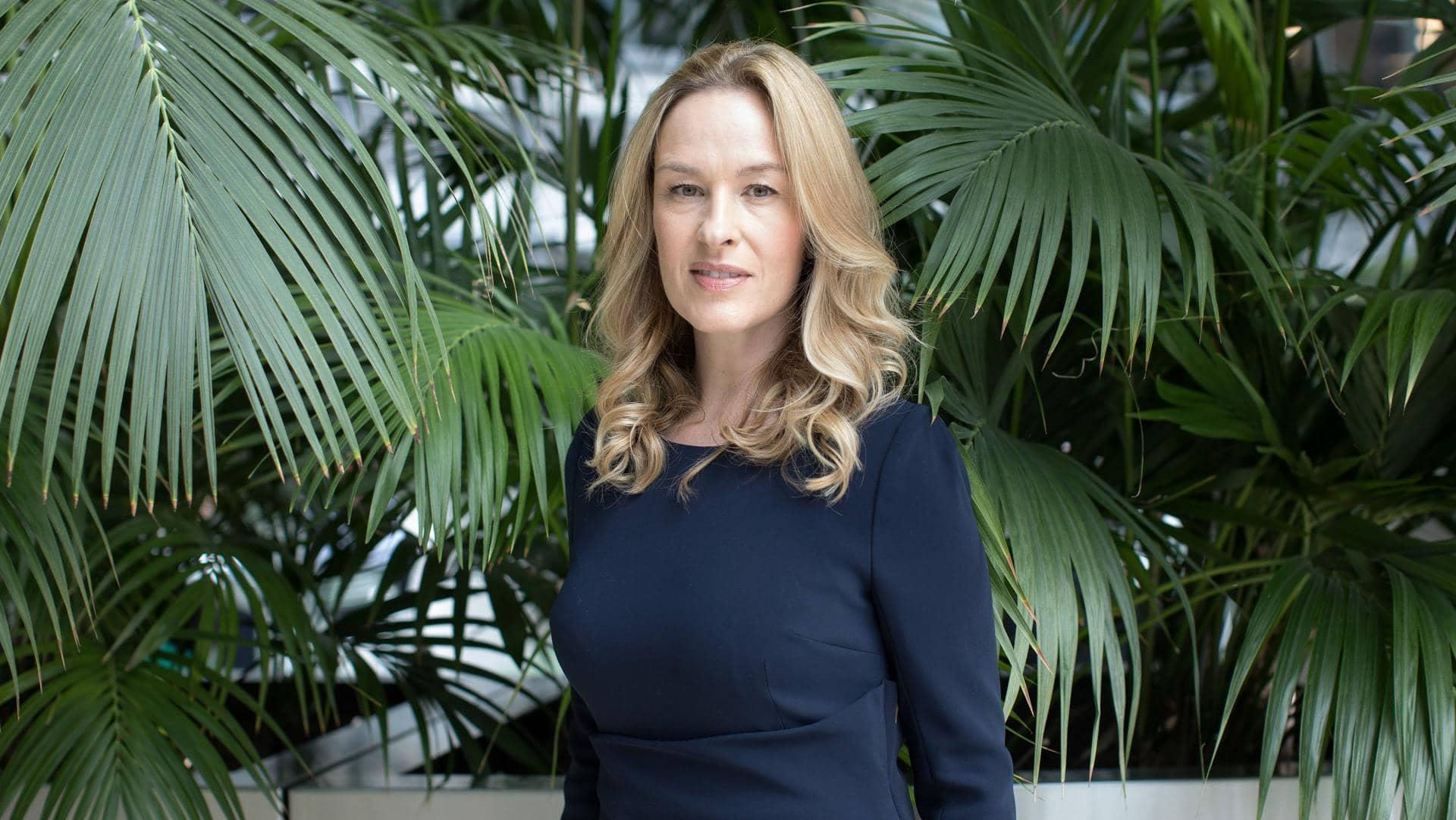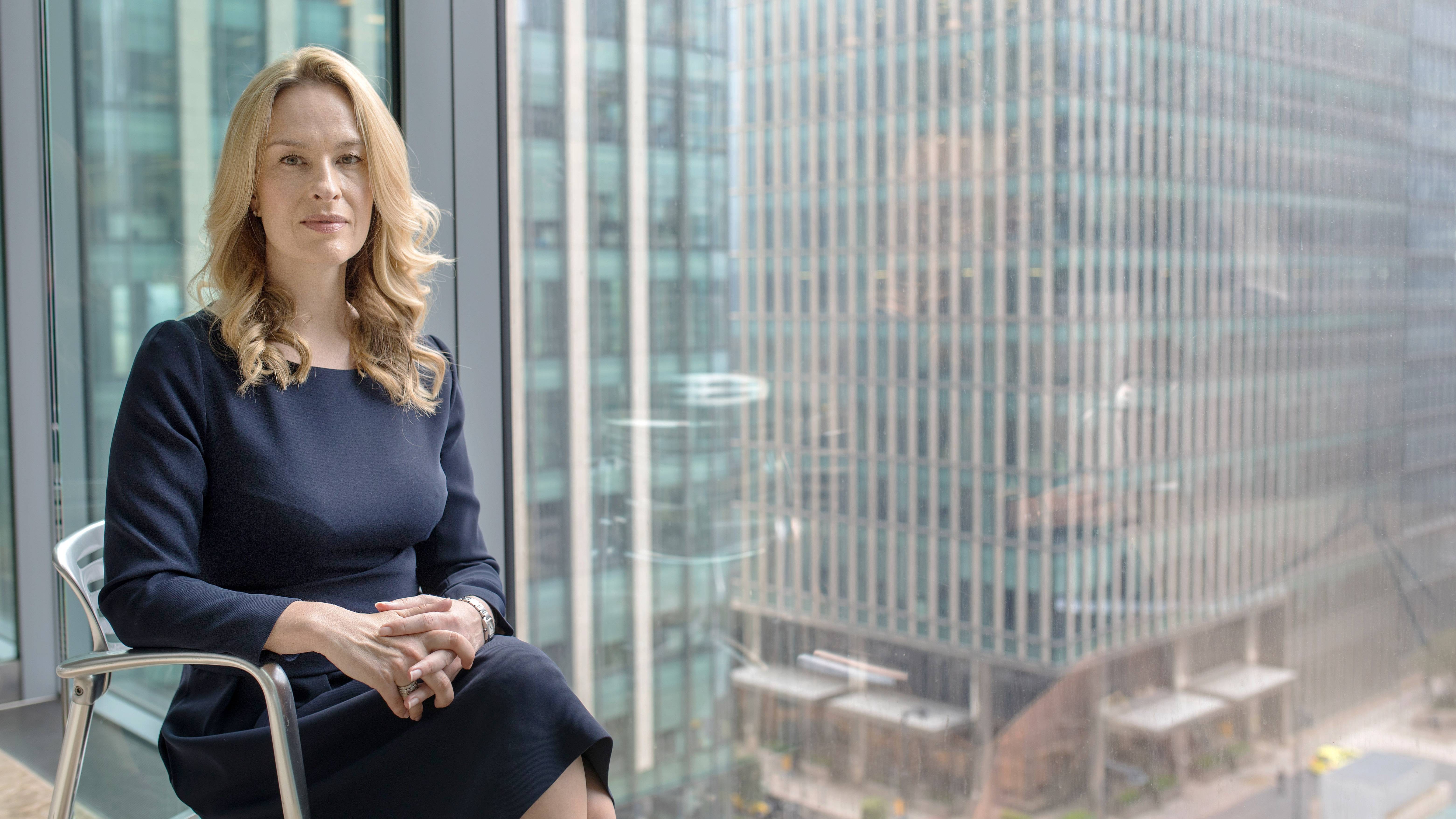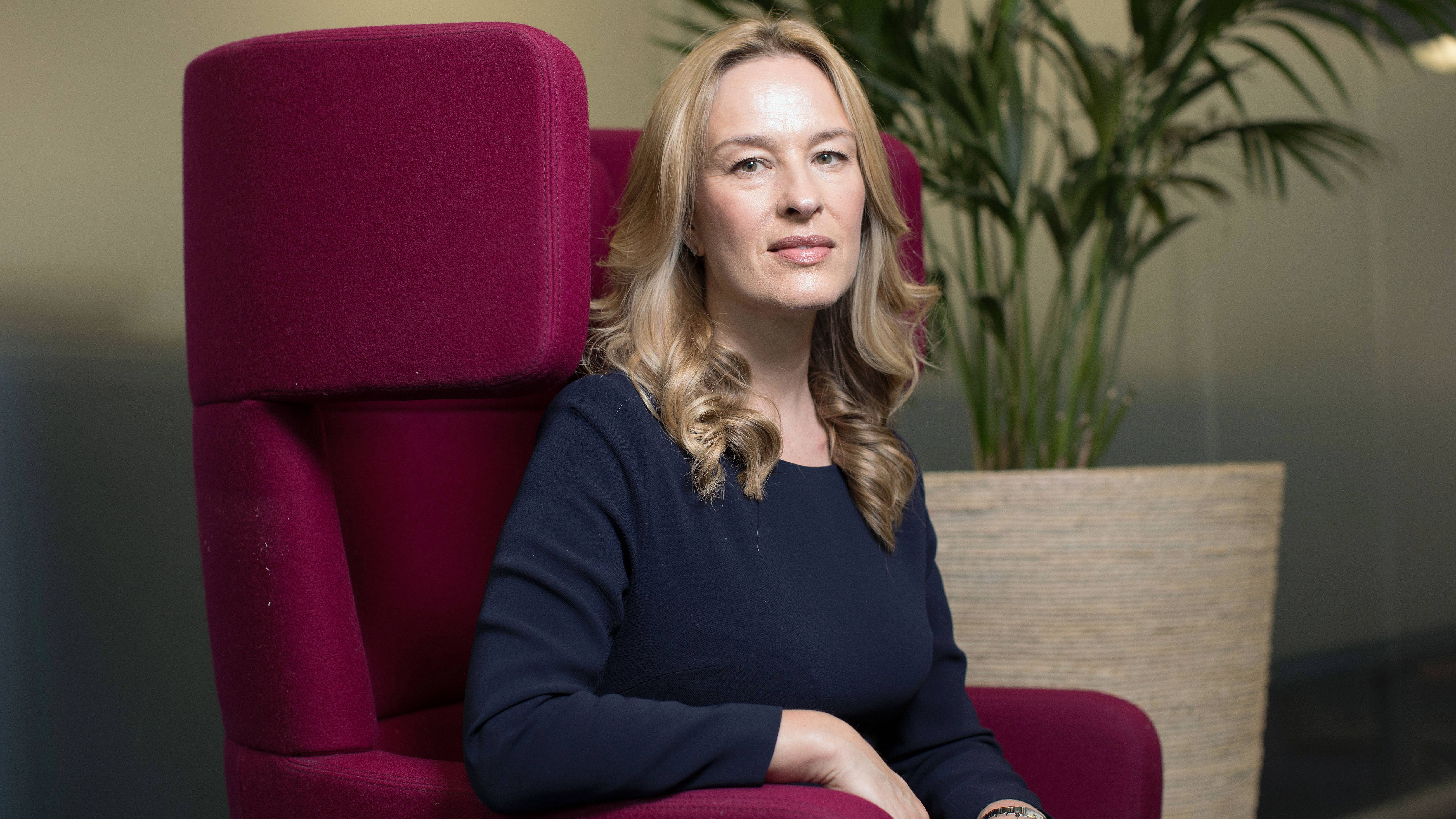
Green shoots
“Someone said to me a little while ago that once you start immersing yourself and engaging yourself with climate change issues, it’s almost impossible to go back to anything else. You would have to wake up every morning and think: I’m using all my skills and abilities to help support a ‘six degree world’. So, I can’t go back. This is me for the next twenty years.”
Dr Rhian-Mari Thomas has, so far, had an 18-year career with Barclays, first in the Investment Bank, then the Corporate Bank, and then at Barclaycard. She is now the Managing Director and Chair of the Barclays Green Banking Council. “I’ve had an unusual banking career path in that I’ve been looking at new trends and working across the organisation rather than staying in one area or another,” says Thomas.
“Two years ago, I started looking at this model of sustainable finance and saw somewhere that I could bring my skills and experience, as a banker, and bring that to bear on a cause that felt very close to me.”
Barclays research following the Paris climate change agreement in December 2015 revealed that $90tn of infrastructure spending would be needed to meet the carbon emissions targets to which national governments had committed. For Thomas, this was a catalyst. “I started thinking about how we could look at all this as a commercial opportunity,” she says. “That number has since gone up. Any calculations showed that this was a huge, value-creating opportunity for the banks to support the financing for one of the most pressing issues of our time.”
With her own ideas of how Barclays could tackle this opportunity, Thomas assembled a handful of colleagues and formed a council to start developing new products and support conversations with clients. This growing coalition (“well over a hundred now,” says Thomas) has developed and launched over a dozen green products, including a €500m bond – the first time a UK bank issued a green bond backed solely by UK assets – that, showing the possibilities for the market, was four times oversubscribed.
“We focus very much on trying to find new niche and pioneering solutions for clients,” says Thomas. “Green bonds are now an established asset class. We arrange and underwrite them for our clients and that’s great, but there are lots of clients who can’t access the bond market, and for them we’ve developed green corporate loans, innovation loans, asset finance, trade loans, corporate deposits – so basically we’ve applied a green lens to our entire corporate banking suite and there’s no reason to stop there.”
Barclays Green Finance product time line

-
Nov '17
Green Bonds
Green Bonds investment: Barclays is a leading investor in green bonds, having committed to purchase up to £2bn worth of green bonds in 2015. We currently hold over £1.5bn.
Green Bonds issuance: in November Barclays became the first UK bank to issue a green bond using UK assets, having successfully priced and issued a 0.625% $500m green bond, under the Barclays Green Bond Framework, released in September 2017.
Green Bonds origination: during 2017, Barclays Investment Bank helped clients issue more than £16bn of green bonds.
-
Dec '17
Green Loan
Barclays Green Loan is a term lending product where the proceeds are used for eligible green projects with the following qualifying environmental themes and activities as defined in the Barclays Green Product Framework:
- Energy efficiency
- Renewable energy
- Green transport
- Sustainable food, agriculture and forestry
- Waste management
- Sustainable water
- Cross-sector activities such as carbon energy financing.
Green Deposits
Barclays Green Deposit is an innovative market development, allowing clients to deposit their excess liquidity into a new product aligned to the green agenda. The deposits are earmarked against our green bonds, and can be matched against a range of climate-related projects. This product is currently available to our larger client-base.
Green Asset Finance
Green Asset Finance is available where funding is used exclusively for eligible assets that support our qualifying environmental themes and activities as defined in the Barclays Green Product Framework (which is listed under Green Loan).
Green Innovation Finance
We have expanded our Innovation Finance capabilities to cover lending for all forms of innovation activities resulting in, or aimed at, significantly improving environmental protection. This includes new production processes, new products or services, and new management and business methods whose use or implementation is likely to prevent or substantially reduce the risks for the environment, pollution and other negative impacts of resource use, throughout the life cycle of related activities.
-
Mar '18
Green Eagle Labs
Our Green Eagle Labs foster a collaborative working environment, offering subsidised desk spaces to support local British expertise in the low-carbon and sustainable sectors. Residents can access a structured programme of knowledge development, professional networking, and mentors from successful green businesses and Barclays.
-
Apr '18
Barclays Green Home Mortgage
Barclays rewards customers with a lower mortgage rate on certain deals when they purchase an energy efficient new build home. Barclays is the first major UK bank to offer a Green Mortgage product.
-
May '18
Green Trade Loan
Supports the green working capital needs of clients from procurement through to final sale of goods. By securing funding from the initial purchase until final payment is received, clients can trade with confidence and plan and manage their cash-flow more accurately.
Profitable solutions
This “green lens” does not simply mean renaming existing products – and can provide more cost-effective solutions to businesses than other options. “We’re starting to see revolving credit facilities where, as an organisation, if you meet the milestones you’re setting for your business to become more sustainable, then you can expect the banks to give you a reduction in your costs of funding.”
Similarly, the Barclays Green Home Mortgage means that for a new build with an A or B energy rating, mortgages are offered at a discount. “The reasons we can do that,” Thomas explains, “are that we can use the proceeds of the green bond, and we’ve done analysis that showed the owners of more energy-efficient properties are less likely to default on mortgages, so that change to risk is reflected in pricing.”
Solving challenges profitably needs to be at the core of how we do this business. We’re not going to be able to scale these initiatives if we’re not being profitable.
At all points, Thomas says that she needs to show the products are commercially viable and profitable: “Solving challenges profitably needs to be at the core of how we do this business. We’re not going to be able to scale these initiatives if we’re not being profitable.”
Thomas and colleagues, working with Sustainalytics, have developed a “Green Product Framework ” to define what actions can lead to offers of green-labelled products.
She says: “The green bond market has established the concept that a financing product is green if it is used for green purposes. So we’re able to go to clients with our published framework and say, ‘If you’re committed to using the finance to do something that will support the environment – which we can check and you report back on – then you’re able to apply for our green lending products. That’s been the basis of a lot of our products, and clients see value in that proposition.”

Clean growth
Beyond the numbers, Thomas also says the Green Banking Council needs to think hard about significant trends that are changing business models: “That’s climate change, resource constraints, and increasing technology-driven transparency. As a business, you can look at those as risks, or you can look at it and say each of those changes represents an enormous opportunity for business. The list of people that refer to ‘“cleaner growth’” as one of the greatest investment opportunities of our generation is long and eminent.”
She adds: “Even if you just look in the UK, the low carbon economy is likely to seriously outpace GDP over the next twenty 20 years. The shift to clean growth is one of the most foreseeable and significant economic trends. This is all new – it’s something that chief executives have to grapple with in working out their business models.
And then banks have a huge role to play – as strategic partners who touch every part of the economy. As participants in each part of that economy transition to a greener and more sustainable future, we need to be able to partner with them.”
Commercial opportunities are also present. Barclays’ own first green bond was a small fraction of the $400bn-worth of green bonds issued to date but, says Thomas: “We at Barclays have a strong debt capital markets franchise and there is no reason why we shouldn’t aim to have a leading position in the green bond market as it grows. There are some ambitious forecasts about how quickly that market reaches $1tn.”

With her experience in the Investment Bank, Corporate Bank and Barclaycard, Thomas is well placed to see the challenge of pulling the organisation’s “green thinking” together: “We’re not going to succeed if we delegate green to a specialist team sitting to one side. It has to permeate the organisation. Banks are organised in departments that focus on certain product groups, clients and sectors, but sustainability is a feature of every sector.”
Thomas has a PhD in Physics and previously worked on research projects involving fuel cells and electric vehicles. She says: “Even at school, I set up a paper recycling project and started a campaign to alert fellow pupils of the ozone-layer damage from aerosols”.
What has motivated her is looking at what impact environmental change could have on Barclays’ customer base. “It was about how we remain relevant to the businesses we serve,” she says. “We needed to develop the right products and services and expertise to support our customers through a huge transition in the way many of them do their business.”
Tipping points
What does she think is the future of green finance? “Anyone doing this has to be a stubborn optimist,” says Thomas. “I think green finance will continue to go mainstream. Ultimately, finance is the lifeblood of the economy, and as the economy becomes greener and more sustainable – driven by regulation and consumer expectation and the consequences of resource scarcity – sustainable finance will become the norm.”
What’s more difficult, she says, is predicting that tipping point. “It does need to happen quickly if we’re going to meet climate change targets and avoid the worst impacts, but businesses and banks can only shift their business models by addressing risks and opportunities in a considered way,” she says.
“The thing that will ultimately drive it will be the economics – technologies becoming cost-competitive. We’re already seeing that with the increasing efficiency of new battery technology, or solar cost curves coming down. Equally, look at the effect of regulation on, for example, the automotive industry, and you can see a tipping point being hit quite quickly.”
Banks have a huge role to play. As each part of that economy transitions to a greener and more sustainable future, we need to be able to partner with them.
Thomas points to a recent Deloitte survey which found that 83% of millennials thought that business success should be measured by more than financial performance – looking at societal purpose for business. She says: “With the younger members of our Barclays Green Banking Council that really comes across with their passion and their views that anything is possible.
“I spoke in Hong Kong recently, and the conversation there about the future of banking focussed on financial technology and global infrastructure projects, yes, but also on green finance. The three were being spoken of interchangeably – and that’s a bit different to how things are often spoken of in London and Europe at the moment where green finance can still be viewed as a bit of a niche. There was a different tone there, and I think that will be the tone we hear in future. Everywhere.”